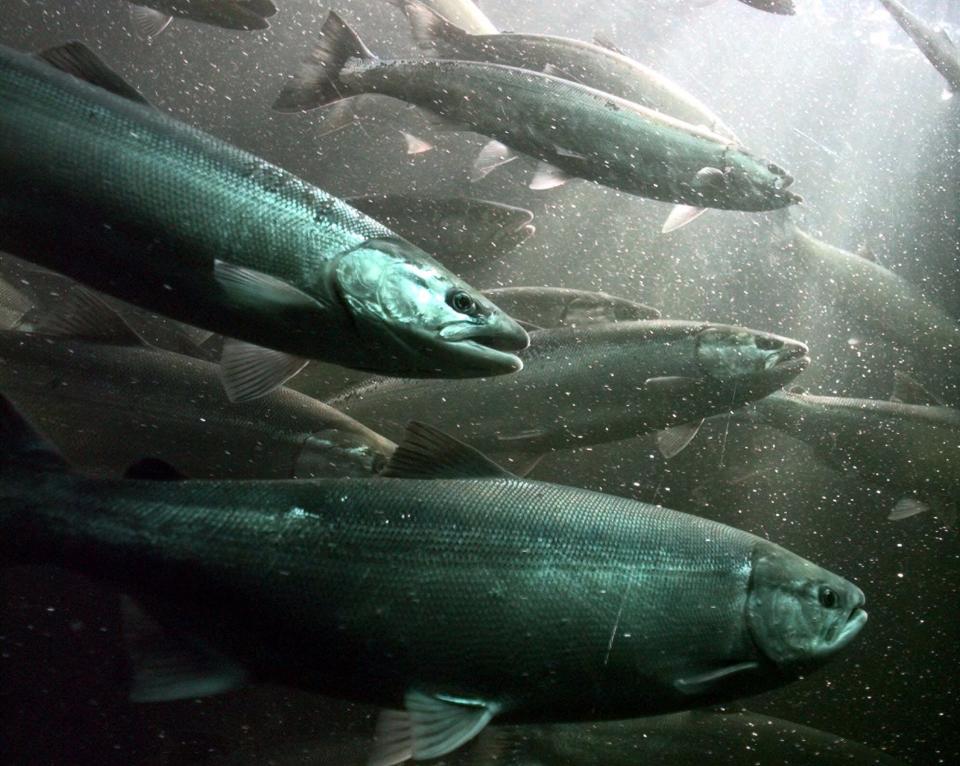Baker: Humans face aging while animals have varied experiences
I’d been working with my Taylor acoustic guitar on a take of Jim Croce’s 1972 tune "Operator" and feeling pretty good about myself. But it was time to walk the brown dog, so the instrument went back into its case and we two mammals headed off to the woods.

“Wait a second, dog … is that a red-bellied or red-headed woodpecker crabbing at us?” The red-bellied’s call is a soft gurgle while the red-headed sounds like someone’s grabbed him by the throat from behind. But which was this one? I wasn’t sure.
A bit later I had a problem with a young tree with flaky, light tan bark. “I know this guy, Cocoa, I’m sure I do.” You’d think that having taught ornithology and field biology courses for God-knows how many years, all this stuff would be ingrained in me. And it is, but the old data banks in the brain are getting harder to access.
Driving home, I turned on Pandora and there was Jim’s beautiful baritone signing, “That’s not the way if feels …” But it was his guitar work that really hurt; his technique just knocked my amateurish version into a cocked hat.
It’s tiring just imagining what it would take out of me to learn his superb fingering for the song. Maybe 10 or 15 years ago, and with a good teacher. But these days I simply can’t muster the energy.
Aging can be the enemy of excellence
Ah, aging. The memory lapses and knee replacements; the dissipating core strength and multicolored pill organizers. The way you have to ask your arthritic joints if it’s worth the effort to get down on your knees to clean a bit of schmutz from the rug.
I wonder, do animals get old like us?
Not an easy question to answer. It’s hard enough to collect data on the average lifespan (longevity) of a given species living in its natural environment. But it’s even more challenging to get a read on how individuals of that species might experience the negative effects of aging at different points within their lives, what’s called the “rate of aging.”
Biologists often measure the rate of aging for a given population of some species by trying to determine how mortality (the percentage of the population dying) changes over time. Humans in western societies, for instance, have a low mortality rate for a number of decades, but that rate increases dramatically once you get to 60, 70 and 80 years.
Robins face high rate of mortality
American robins, like a lot of other birds, exhibit a very different pattern. Typically, only a quarter of newly fledged robins in our area will make it to the start of their first winter. From that point on, however, about 50% of the remaining individuals will die each year. Although some few robins might survive to over 10 years, the average life span is just a bit over two.

A third survivorship pattern is seen in many fish, clams, and marine invertebrates that produce thousands to millions of offspring, almost all of which perish very quickly. But those few that do make it past the larval stage have a high probability of reaching maturity.
Only about 2% of fertilized sockeye salmon eggs, for example, will reach adulthood. But those that do will have a good chance to spawn at 3 to 5 years. Of course, after spawning, all the adults die, putting an interesting edge to their aging process.
Do animals age like people do?
But all of this rather sidesteps the intent of my original question, “Do animals get old like us?” by which I implied, do they also experience declines in physical and mental capabilities as they get older?
Well, yes and no. All organisms experience some level of “extrinsic” mortality due to factors like predation, broken bones, torn wings and the like. But scientists have only recently come to understand that there is enormous variability among animals in their susceptibility to “intrinsic” mortality factors.
There’s good evidence that the accumulation of cell-based problems like telomere shortening, cellular senescence, mitochondrial dysfunction, and the accumulation of misfolded proteins plays a significant role in the physical deterioration of most bird and mammal species as they age.
But we are learning that a diverse array of other types of animals, scattered across the animal kingdom, seem to experience negligible impacts of such factors on their health.
Greenland sharks and ocean quahog clams have been aged at over 500 years, American lobsters at 100, and the little Eastern box turtle roaming our moist deciduous forests at 140 — each without much measurable loss of the physical abilities seen in younger specimens. How are we to explain the extreme, healthy longevity of such species?
Then there’s the little freshwater Hydra you may have studied in high school biology. It’s the best-known example of a creature exhibiting no apparent aging at all. Under benign conditions with plenty of food and no predators or parasites, it’s apparently immortal.
Ken Baker is a retired professor of biology and environmental studies. If you have a natural history topic you would like Dr. Baker to consider for an upcoming column, please email your idea to fre-newsdesk@gannett.com.
This article originally appeared on Fremont News-Messenger: Baker: People affected by aging while different species face different battles

